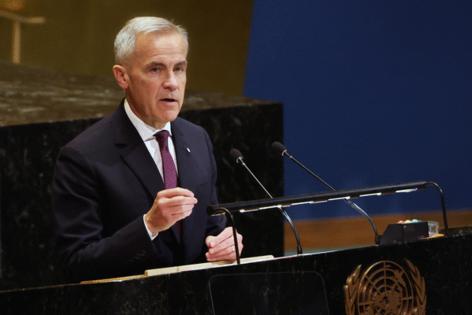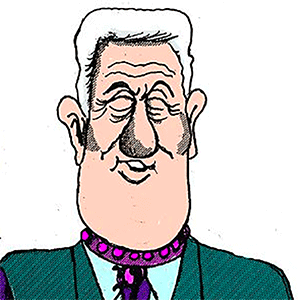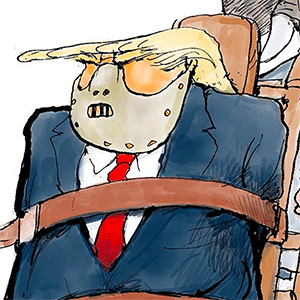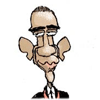Canada rebuilds Asia trade ties to counter Trump tariff pain
Published in News & Features
VANCOUVER, Canada — President Donald Trump’s latest tariff salvo against Canada landed just as Mark Carney was setting out on a mission to insulate his country from the fallout of the trade war.
As the U.S. leader declared an additional 10% levy on Canadian goods this weekend — angered by a critical advertisement from the province of Ontario — Carney was starting his first trip to Asia as prime minister. The goal: repairing commercial ties and reducing Canada’s dependence on its unpredictable southern neighbor.
Carney has spent recent days at the Association of Southeast Asian Nations summit in Malaysia, seeking to finalize a free trade deal between Canada and the 11-member bloc. He’s next heading to the Asia-Pacific Economic Cooperation summit in South Korea, where he’ll meet Chinese President Xi Jinping.
As Canada counts the job losses from Trump’s punishing tariffs, Carney is urgently building relationships with Asian giants to forge an economic counterweight to the U.S., which buys three-quarters of the country’s exports. It’s a screeching U-turn from just a year ago, when relations with China and India were at their weakest in decades.
That new mindset has stretched beyond Ottawa, from Toronto’s financial towers to Alberta’s oil sands and British Columbia’s mines and ports. Canadian executives are reorienting their attention toward Asia and finding new ways to shuttle the country’s abundant natural resources across the Pacific. They’re betting that deeper integration will cushion the blow from Trump’s levies, which have sparked not only economic upheaval but a cultural backlash against American goods.
“The speed of the changes is very striking,” said Jeff Nankivell, head of the Asia Pacific Foundation of Canada, a government-backed, arm’s-length group that recently opened an office in Singapore. He was previously a senior diplomat for Canada in China and Hong Kong.
While almost every country is trying to diversify its export markets to counter US tariffs, it’s “an existential issue for Canadians,” Nankivell said.
Among residents, concern over Trump’s policies is so strong that more Canadians currently see the U.S. as an “enemy or potential threat” than they do China or India, according to a recent poll from the Angus Reid Institute. Carney has laid bare his intentions to redirect his country’s trade focus, outlining plans last week to double exports to markets outside of the U.S. over the next decade.
The shift is particularly apparent — and critical — in west coast trade centers such as the far northwest port of Prince Rupert, which promises an ocean journey to Shanghai nearly three days faster than from Los Angeles. The city of just 12,000 people is in the process of a yearslong expansion plan for rail bridges, freight handling yards, logistics parks and propane export facilities, ready to capitalize on a renewed Asia focus.
“We know that there are customers overseas for so much of what we produce here,” British Columbia Premier David Eby said in a May speech ahead of his own trade mission to Asia. “Our province will be the engine of the new Canada that is more independent, that is less reliant on the United States.”
Asia Pivot
Just 12 months ago, former Prime Minister Justin Trudeau and Indian Prime Minister Narendra Modi were expelling each other’s top diplomats. Canada’s relations with China had been in a deep freeze for even longer, ever since the 2018 arrest of Huawei Technologies Co.’s financial chief in Vancouver on a U.S. extradition request.
Carney, a former central banker who campaigned to replace Trudeau on a back-to-business doctrine, started his outreach early. Less than two months after being elected in April, the prime minister invited Modi to the Group of Seven summit in Alberta, the Indian leader’s first visit to Canada in a decade.
At the G-7 summit, Carney and Modi agreed to reestablish formal diplomatic relations. That could lead to restarting long-frozen trade talks, as India also faces high U.S. tariffs.
And despite Canadian levies against Chinese electric vehicles and metals, as well as restrictions on tech companies such as TikTok, Carney is trying to resolve tensions with Beijing, which is taxing Canadian food products in retaliation. Foreign Minister Anita Anand was in China in October, only the third such visit in eight years.
It’s a rapprochement some in the private sector are welcoming.
“Our team in China will be fist-pumping in the air,” said Kari Yuers, chief executive officer of Kryton International Inc., a Vancouver-based firm that protects concrete, with operations in China and India, the latter being one of its fastest-growing markets.
“We are looking at facilities growth, and expanding our manufacturing abilities in India, so these good things happening certainly bode for confidence in doing those types of investments,” she said.
Royal Bank of Canada also is looking to expand in the region, CEO Dave McKay said in a September interview. Canada will look for more energy partnerships in Asia as well as more manufacturing capability, he said.
“This is a big part of the prime minister’s strategy,” McKay said. “Therefore it’s going to become a more important part of us investing in Asia, investing in connectivity from Canada to Asia.”
In the last three months, Carney also signed a trade deal with Indonesia, advanced projects to increase Canada’s gas exports to Asia, and shortlisted a Korean firm bidding to build its submarine fleet, a contract worth tens of billions.
Betting on a Port
In British Columbia, humble Prince Rupert has become emblematic of the effort to find new markets for what Canada is selling. The port is invoked by politicians thousands of miles away, from parliament in Ottawa to Saskatchewan, where Premier Scott Moe wants a northern trade “corridor” to sell more prairie goods westward.
Prince Rupert — situated as far northwest from Vancouver as San Francisco is south — is way ahead of them. Although Canada’s fervor for diversification mostly began after Trump’s election, the port is years into building C$3 billion ($2.2 billion) of improvements. CEO Shaun Stevenson said the work will enlarge the port’s annual capacity from 45 million tons of cargo to almost 65 million in the next five years.
Now, investors and politicians are pitching more additions. Rob Booker, CEO of terminal operator Trigon Pacific Terminals Ltd., is working on expansion plans, and said he’s even getting calls from the mineral-rich “Ring of Fire” region in Ontario 2,000 miles to the east about exporting concentrates.
It won’t be easy. Ports ultimately rely on predictable free trade, an economic model under threat. Prince Rupert’s geography is a curse as well as a blessing, because to reach it from the east, railways and roads must cut through hundreds of miles of rugged mountains, boreal forest and rainforest.
It was a quixotic place to build a major port at all, and it’s grown in fits and starts. Prince Rupert’s “founding father,” Charles Hays, chose the area more than a century ago as the terminus for the new Grand Trunk Pacific Railway, believing its location would seed a trading metropolis. He died on the Titanic, and seven years later the railroad company defaulted on government loans. (In the TV series Downton Abbey, the fictional aristocratic family patriarch loses much of his fortune investing in the railway.)
The railway, which reached Prince Rupert in 1914, was described by a government engineer in historical accounts as being built 100 years too early. But a century on, Hays’ extravagant vision is winning new appreciation.
Prince Rupert services Asian demand for commodities like fuel, coal, grain and plastic, while North Americans import Asian parts and electronics. Almost all of it moves in and out via the Grand Trunk Pacific Railway’s successor, Canadian National Railway Co., which runs to Chicago, New Orleans, Toronto and beyond.
CEO Stevenson says when the port runs well, it can be a week faster than rivals, saving carrying costs for shippers, and knitting together “just-in-time” supply chains.
Some investments are to improve the balance of containerized trade with Asia. Vessels today arrive full of merchandise, but aren’t always full for return journeys, a drawback for shippers. A new C$750 million yard called Canxport is designed to improve “trans-loading” of products into trains from containers, and will be a major stimulus by drawing more goods in by rail for export, Stevenson said.
Oil Pipeline
Prince Rupert’s port is also coveted in a fierce national debate about building a new pipeline to ferry more oil — Canada’s top export — from neighboring Alberta to the Pacific. It’s already earned the nickname “The Port of Alberta” after the land-locked province funded a grain terminal that opened in 1985.
Demand is there: Canada’s oil exports to China were heading for a record month in October as the Asian giant shifts away from the U.S., thanks to a pipeline that ends near Vancouver, expanded under Trudeau.
But Alberta can still only sell most of its oil to the U.S., and now Trump’s trade war means the province’s premier, Danielle Smith, has found a newly receptive political climate to push for a new route to tidewater.
Albertans are “leaving money on the table by not being able to get world prices for world commodities,” said Devin Dreeshen, the province’s transport and economic corridor minister. His colleague, Indigenous Relations Minister Rajan Sawhney, visited Prince Rupert in June and discussed the potential pipeline with Indigenous groups, the Metlakatla and Lax Kw’alaams.
But the project is politically fraught. It’s already sparking Indigenous and environmentalist opposition. It would cost tens of billions of dollars but there’s no private sponsor yet, and businesses suggest federal rules dissuade them from coming forward. A similar proposal from Enbridge Inc. collapsed almost a decade ago.
Even without oil, though, Canada’s Pacific coast is emerging as a new energy corridor to Asia. It already handles shipments of liquefied natural gas and propane from the Montney formation — one of the world’s largest shale gas deposits, spanning northern British Columbia and Alberta. The largest facility, LNG Canada, started up in June and is owned mostly by Asian investors.
Prince Rupert’s Ripet terminal, opened in 2019, now supplies about a quarter of Japan’s liquefied petroleum gas imports and 13% of South Korea’s, according to co-owner AltaGas Ltd. — so that company has started building a new project with Dutch firm Royal Vopak, dubbed Reef. Its C$1.35 billion first phase, due to start operations next year, will export another 55,000 barrels daily, and its jetty capacity could be extended tenfold, AltaGas CEO Vern Yu said during a tour of the construction site.
“We have a series of shovel-ready projects that we could expedite, if the Canadian permitting process was faster,” Yu said, appealing to Carney’s efforts to accelerate projects of “national interest.”
But Carney’s push to rewire the economy is running headlong into the political turbulence that first spurred it, with Trump walking away from talks and his officials reviving their complaints about Canada.
Carney responded with an air of calm as he boarded the plane for Asia: “We can’t control the trade policy of the United States,” he said, but Canada can work on “developing new partnerships and opportunities, including with the economic giants of Asia.”
Even after he wraps up the trip, business will continue the work. Next week, Shanghai will host the China International Import Expo. According to China’s Vancouver consulate, a record number of Canadian businesses will be exhibiting, from Avalon Dairy to Lululemon Athletica Inc.
____
(With assistance from Christine Dobby and Jade Khatib.)
©2025 Bloomberg L.P. Visit bloomberg.com. Distributed by Tribune Content Agency, LLC.







Comments